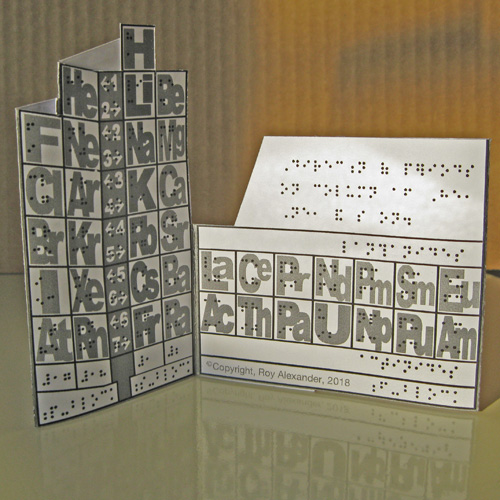The ElementBook is based on an innovative three-dimensional tactile/sculptural form - the Alexander Arrangement of Elements - that improves learning for sighted students as well, departing from the flat tabular form of the arrangement of elements.
Developed from a 1965 experiment by Roy Alexander, the continuous line of element data boxes, wrapped into 3D helix has resulted in a depiction close to the elements in nature, acting as an interim portrayal between reality and the tabular format of the Periodic Tables - which, showing all the elements in a single view, have been critically important in the study and practice of chemistry for a century and a half.
|
|
For blind and visually impaired chemists and students, applying the idea to a Braille model has extraordinary benefits by uniquely position, identify, and make Braille accessible identification of all elements in a remarkably convenient size and cost.
The concept has reached the Beta-test functional prototype stage, which we trust will demonstrate viability for scaling up production to meet the needs of all qualified students, which, in turn should improve opportunities for blind students to matriculate into chemistry courses in larger numbers than previously - in the US and perhaps worldwide.
|
